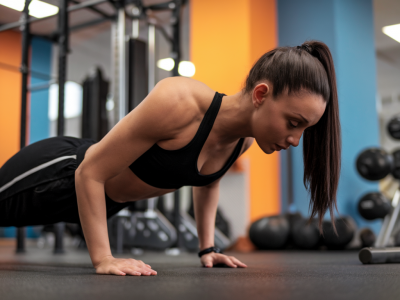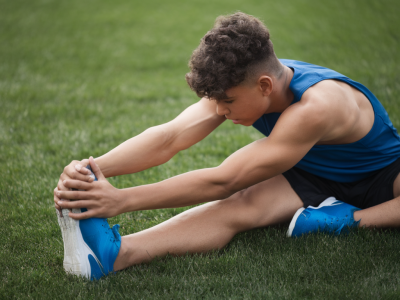
Runners, I see you out there conquering long miles, savoring the runner's high, and chasing your personal bests. But let’s face it—running can be tough on the body. Tight hamstrings, sore calves, and low back pain are just a few of the common challenges that come with logging miles. That’s where yoga steps in to save the day. By incorporating yoga into your routine, you can not only prevent injuries but also boost your flexibility, endurance, and overall performance. Today, I’ll walk you through some of the best yoga poses for runners that focus on stretching, recovery, and strengthening your body.
Why Runners Need Yoga
If you’re a seasoned runner, you’re no stranger to the repetitive impact running has on your joints, muscles, and connective tissues. While running is great for cardiovascular health, it often leads to muscle imbalances. For example, tight hip flexors and weak glutes can negatively affect your stride and posture. Enter yoga—a perfect counterbalance to these issues.
Yoga helps you build functional strength, enhance your range of motion, and improve body awareness. Plus, let’s not underestimate the mental clarity it provides. Whether it’s calming pre-race jitters or teaching you to embrace discomfort during a long run, yoga can be a total game-changer for anyone who laces up their running shoes regularly.
The Ultimate Yoga Poses for Runners
Here are my top yoga poses for improving flexibility, endurance, and recovery. Trust me, your legs will thank you later!
Downward Dog (Adho Mukha Svanasana)
This classic yoga pose is a runner’s best friend. It stretches the hamstrings, calves, and Achilles tendons—all areas that tend to tighten up after a run. It also helps lengthen the spine and release tension in the shoulders.
How to do it: Start in a tabletop position on your hands and knees. Tuck your toes under, lift your hips towards the ceiling, and straighten your legs. Aim to form an inverted V-shape with your body. Keep your heels reaching toward the floor, even if they don’t touch, and focus on lengthening your spine.
Pigeon Pose (Eka Pada Rajakapotasana)
Tight hips are a common complaint among runners, and Pigeon Pose is like a deep tissue massage for this area. This pose helps open up the hip flexors and stretch the glutes and piriformis muscles—a must after a long run.
How to do it: From a downward dog position, bring your right knee forward and place it behind your right wrist. Your shin can be angled or parallel to the mat. Extend your left leg straight behind you, and rest your hips on the floor or a yoga block. Sit up tall, or fold forward over your bent leg for a deeper stretch. Repeat on the other side.
Low Lunge (Anjaneyasana)
This pose targets your tight hip flexors and also strengthens your quads and lower body. It’s an excellent way to recover after a long run when everything feels compressed and stiff.
How to do it: Step one leg forward into a deep lunge position, ensuring your knee is stacked over your ankle. Lower your back knee to the ground and untuck your toes. Lift your arms overhead for an added stretch in the upper body, and breathe deeply. Repeat on the opposite side.
Reclining Hand-to-Big-Toe Pose (Supta Padangusthasana)
This pose is my personal go-to when I feel that post-run tightness creeping into my hamstrings and calves. It also encourages greater flexibility in the hips and spine.
How to do it: Lie on your back and loop a yoga strap (or a resistance band) around the ball of one foot. Extend your leg toward the ceiling, holding the strap with your hands. Keep the opposite leg grounded on the floor. Hold for several deep breaths and switch sides.
Child’s Pose (Balasana)
Child’s Pose is the ultimate restorative posture. After a tough training session, it’s perfect for gently stretching the lower back, hips, and thighs while promoting relaxation.
How to do it: Kneel on the mat with your big toes touching and knees wide apart. Sit back on your heels, then fold forward, extending your arms in front of you or resting them by your sides. Let your forehead rest on the mat and focus on deep, calming breaths.
Tips for Incorporating Yoga into Your Running Routine
As with any new addition to your workout schedule, consistency is key. Here are some tips to help you reap the full benefits of yoga as a runner:
- Start small: If you’re new to yoga, begin with just 10-15 minutes a few times a week.
- Focus on post-run yoga: Recovery is crucial. Dedicating time after your runs to stretch with yoga will help you bounce back quicker.
- Use props: Don’t hesitate to use yoga blocks, straps, or cushions to make poses more accessible and comfortable.
- Mix it up: Explore different styles of yoga, such as restorative yoga on your rest days or dynamic vinyasa flows for cross-training.
Bonus: Breathing Techniques for Endurance
A key aspect of yoga that often gets overlooked by runners is the focus on breathing. Pranayama, or breathwork, can teach you how to control your breath under stress—an invaluable skill for long-distance events. Try incorporating diaphragmatic breathing into your yoga practice as a way to build endurance and improve oxygen efficiency.
Now go ahead, roll out your yoga mat, and give these poses a try! Whether you're chasing a PB at your next race or simply want to run pain-free, yoga can truly transform your performance—and your recovery.

